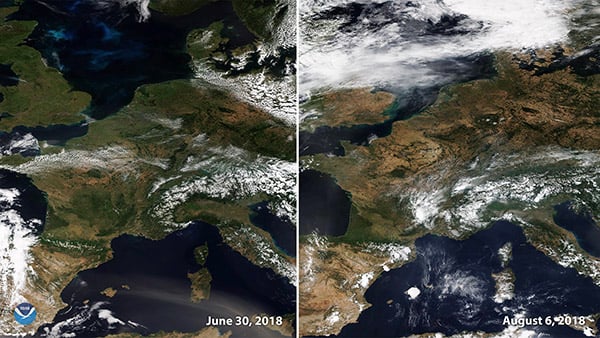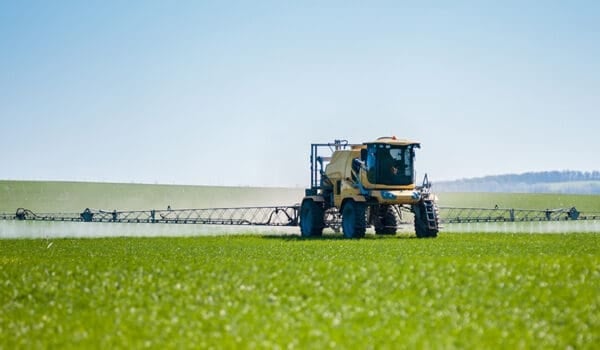In 2018, Europe experienced one of the worst droughts of the 21st century. An exceptionally long period of high temperatures and little precipitation resulted in an unprecedented browning of vegetation. It also meant that Europe’s vegetation did not take up any CO2 from the atmosphere in that year.
“The extensive heatwave and drought in 2018 had a negative impact on vegetation across Western and Northern Europe. This means that over the year, there was no uptake of CO2 from the atmosphere by vegetation, which we would normally expect to see”, explains Dr. Rona Thompson. Thompson is a senior scientist at NILU – Norwegian Institute for Air Research and first author of a recently published article in a special issue of Philosophical Transactions of the Royal Society B. The issue focuses on the effects of the 2018 drought using data from ICOS (see fact box below).
CO2 sink dries out
The land biosphere takes up CO2 from the atmosphere through photosynthesis and releases it again through respiration. Presently in Europe, the uptake (also known as primary productivity) slightly outweighs the release, resulting in a sink of CO2 from the atmosphere. This sink partially (6%) offsets the amount of CO2 emitted in Europe by human activities, especially fossil fuels. The difference between the primary production and the total respiration is known as the Net Ecosystem Exchange, or NEE. Positive NEE indicates CO2 going from the land biosphere into the atmosphere, while negative NEE means that the CO2 is going from the atmosphere into the land biosphere.
During the spring of 2018, northern Europe generally experienced good growing conditions, resulting in more negative NEE. Or, in other words, enhanced CO2 uptake.
“At that time, there was still a lot of water in the soil”, says Thompson. “With more light and warmer temperatures, vegetation benefited and was able to take up more CO2 than normal.”
By the end of spring, higher temperatures and the lack of precipitation started to negatively affect vegetation and CO2 uptake. The record long drought period resulted in NEE being close to zero for Western and Northern Europe for 2018. This in contrast to the past 10 years, when annual NEE has always been negative.
“The implications of this are that Europe’s natural CO2 sink, which helps offset some of our CO2 emissions from fossil fuels, is fragile”, says Thompson. “Climate models predict that summer droughts will become more likely, meaning that Europe’s land biosphere sink may get smaller or even eventually disappear in the future.”

Quantification by atmospheric inversion models
Thompson and her co-authors have used five different regional atmospheric inversion models to quantify the effect of the drought period on NEE.
They looked at variations of CO2 in the atmosphere. Then, with an atmospheric transport model, they tried to model these variations using estimates of CO2 fluxes, in particular NEE from land biosphere models. They then looked at the mismatch between their modelled CO2 and CO2 observations, and used this mismatch in a statistical optimization to improve the original NEE estimates.
“We used atmospheric CO2 observations from 48 sites across Europe, to constrain NEE”, Thompson explains. “We found that the five different inversion models were able to consistently detect the change in NEE in 2018.”
Their models showed that in temperate Europe, annual NEE was more positive (less CO2 uptake) in 2018 compared to the 10-year mean, resulting in no net CO2 uptake that year. They found a similar result also for northern Europe, even though the vegetation actually benefited from warmer temperatures during the spring of 2018.
Thompson et al. conclude their article with pointing out that absolute NEE values from atmospheric inversion models remain uncertain. To achieve better results, they would need more exact fossil fuel emission estimates, constraints on boundary conditions – and a well-maintained high-density atmospheric observation network.

